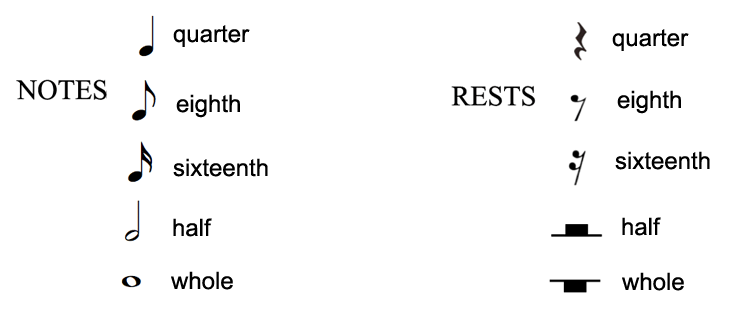Setting the Beat
In the image for this section is a typical example of using quarter note rests.
Let’s call this the “Kangaroo” song. Note that the time signature is 4/4. Play the mp3 audio file below the image to hear how the “Kangaroo” song sounds.
I’ve added something new as you might have already heard. There are now “clicks” that can be heard before the song starts playing. These “clicks” tell the player what tempo to use to start playing the song. This routine is called Setting the Beat. Every musician needs to know what the Tempo will be in order to start to playing a song. At the bottom of the page are more terms or phases that are used to describe the same routine of Setting the Beat.
Listen to the "Kangaroo" song and then play along with the mp3 file. Do this for 5 minutes. Then push stop on the player and play the song without the help of the mp3 file. Do this for 5 minutes. When you are done practicing, go to Section 3.
Other terms used to describe the routine of “Setting the Beat.”
Counting Off
Giving you one measure
Finding the beat
Finding the tempo
Determining the beat or rhythm
Ana 1 Ana 2 . . . Mr. Welk
ONE, TWO, THREE, FOUR . . . Rock n Roll
Giving you 4
Begin counting or tapping
There are more of these, but these are the ones you’ll hear the most.



